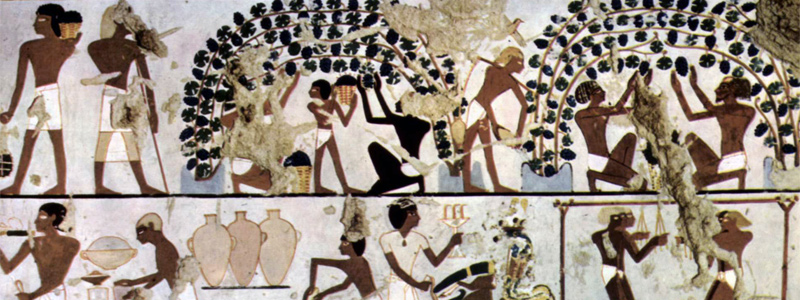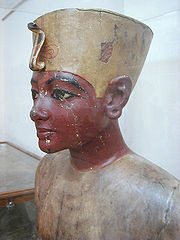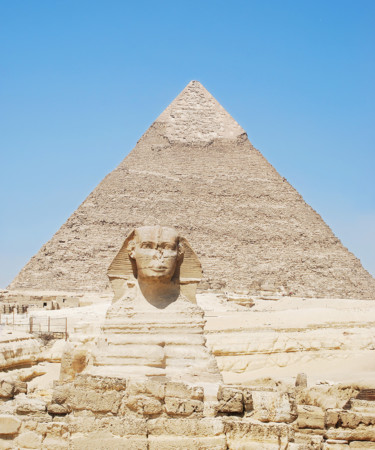At VinePair we love any excuse to delve into the history of wine. Recently we covered the history of wine centered on Purim and ancient Persia, and with Passover beginning tonight, we yet again have a great excuse to look at wine and history — two of our favorite subjects, especially since Passover specifically includes the requirement to consume four cups throughout the seder.
So what are we waiting for, let’s delve into the history of wine around the age of the Exodus.
The main theme of Passover is the enslaved Jewish people’s Exodus from Egypt. Jewish religious texts place the Exodus in the 2nd millennium BC. Many archaeologists, historians and other religious scholars, using clues from biblical texts, have pinned the date closer to the 1st millennium BC. Using that broad window of time as a jumping off point, we’re going to explore some interesting Bronze and Iron Age wine history from Egypt and Canaan.
How Many Words Are There For Alcohol In The Hebrew Bible? Quite A Few Actually

How many different words does the Torah have for alcohol? It’s a bit complicated. We’ll stick to the two most common languages, Hebrew and the Greek translation. In the Hebrew version there are at least 10 different words for varying libations. The Koine Greek version narrows things down to five words. So where is all the variation happening in the Hebrew? We have yayin, the most common word for wine. But we quickly get into some precise ideas:
- ‘asis – Sweet or new wine, from the current year’s vintage
- mamsak / mesekh – Wine mixed with water and spices.
- Shekar – A strong drink ranging from 7 to 10 percent alcohol. This would include both wine or barely beers (aka barley wine).
Head over to Wikipedia to see the entire list.
Ancient Egypt’s Key Role In The Development Of Wine Storage

The ancient Egyptians played an important role in the storage and transportation of wine, making important technological advances, which helped prevent wines from spoiling. Most archaeologists and historians believe that wine made its way to ancient Egypt via trade. Preventing wine from spoiling via exposure to oxygen was a problem that plagued man for thousands of years. As ancient importers (and eventually producers) the Egyptians made their biggest contribution to wine in this field. The amphora, a ceramic jar, was the ancient world’s most common way of storing and transporting wine. A number of civilizations developed amphorae over thousands of years, but the Egyptians are credited with introducing standardized ones to facilitate the Mediterranean wine trade.
The Egyptians sealed their amphorae with reeds, wet clay and other bits of pottery. Other civilizations improved on the stoppers, but it wasn’t until the waning days of the Roman Empire that wooden barrels finally supplanted the amphorae as the best agreed upon way to transport wine.
The World’s First Wine Labels: Vintages For The Trip To The Other Side
The New Kingdom period in ancient Egyptian history ran from 1550 to 1070 BC. By this time the Egyptians were growing their own wine in the fertile lands of the Nile Delta. While the Egyptians drank wine regularly, they, like many other civilizations, believed it had a divine origin, in large part due to the combination of its intoxicating effect and a lack of understanding of how fermentation occurred.

When many of the pharaohs were entombed for their trip to the afterlife, their chambers were filled with wine, among other valuable goods. And not just any wine. When Tutankhamen’s tomb in the Valley of the Kings was unearthed, 26 wine jars were discovered. Each bore an inscription describing the (long ago evaporated) wine it contained. Like a modern label these inscriptions recorded the wine, the source, the vintage and in some cases even the vintner: “Year Four. Wine of very good quality of the House-of-Aton of the Western River. Chief vintner Khay.” Other jars appear to have contained white wine, which was most likely imported from abroad.
Osiris Plays The Role Of Dionysus
The Greek god Dionysus, the god of wine, had a counterpart in Ancient Egypt. Though the ancient Egyptians didn’t form worshipful cults around a god of wine, like the Greeks (and later the Romans), they did share the belief that wine had divine origins. The most common school of thought on this is that Osiris, the god of the dead, the underworld and the afterlife, was responsible for introducing wine to man. This aligns nicely with the verifiable fact that the pharaohs surrounded themselves with wine for their trip to the afterlife.
Ancient Real Estate Records For Canaan: The Wine Is On The Deed
In an area of Canaan that corresponds to present-day Southwestern Syria archaeologists have unearthed cuneiform tablets detailing real estate transactions. The common unit of measurement for a residential property? A house together with its watchtower, its olive grove and its vineyard. You can see a reference to this in the Book of Nehemiah. If you’re presently house hunting, we’d say that the lack of an included olive grove and vineyard is a deal-breaker. The watchtower is negotiable.
